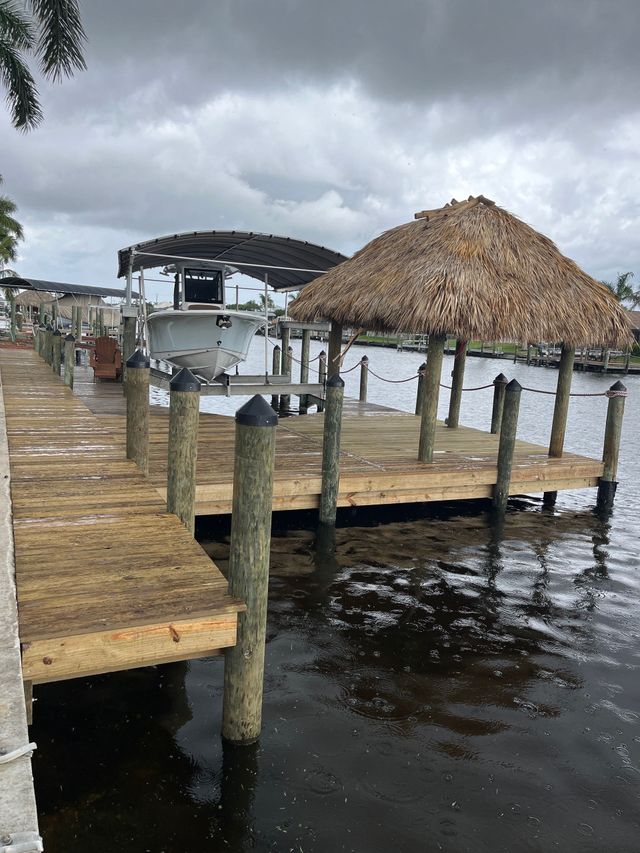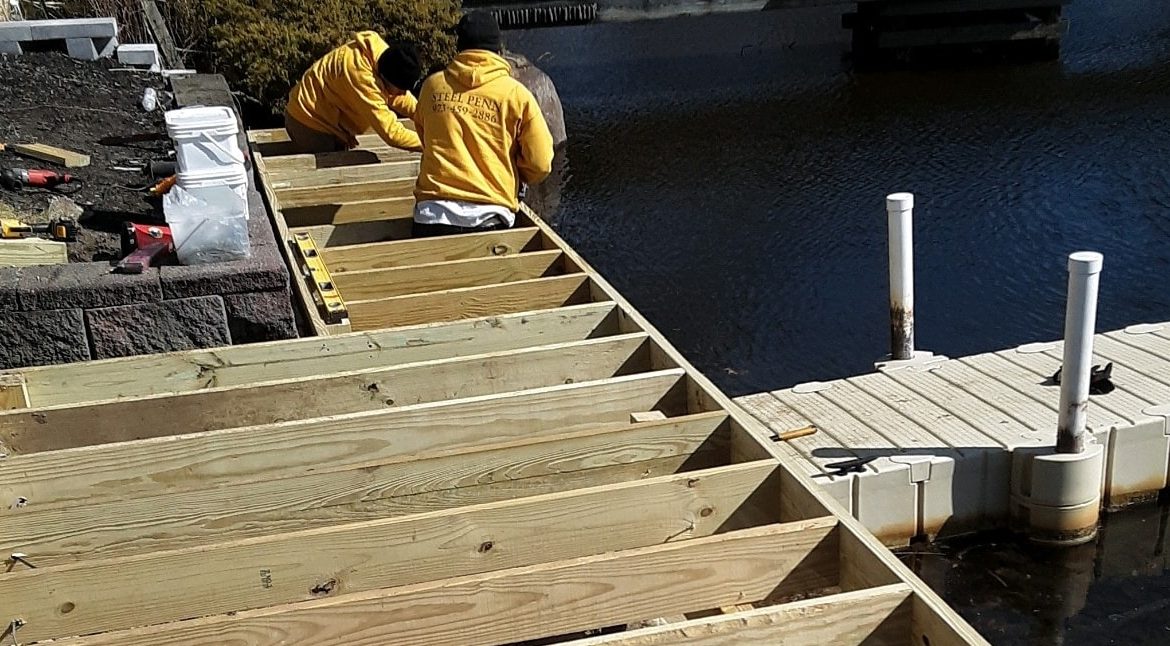The Significance of Timely Dock Repairs for Waterside Security
The Significance of Timely Dock Repairs for Waterside Security
Blog Article
Reliable Dock Repair Techniques: Ensuring Structural Integrity
Making certain the structural stability of docks with reliable repair work methods is paramount for the long life and safety of marine centers. Subsequently, choosing the appropriate repair materials, such as composite materials and corrosion-resistant alloys, is important for durability.
Examining Dock Damages
Assessing dock damage is a critical initial step in ensuring the structural honesty and safety of any docking center. This first assessment entails an extensive assessment to recognize both noticeable and hidden problems. Key elements to take a look at consist of the dock's structure, pilings, outdoor decking, and equipment. Each part needs to be scrutinized for signs of wear, rot, corrosion, or various other forms of degradation that could jeopardize the structural stability.
Structural engineers or qualified assessors generally perform these assessments making use of specialized methods and tools. For circumstances, undersea assessments may employ finder tools or remotely operated lorries (ROVs) to spot submerged damages. Above water, aesthetic assessments are complemented by using dampness meters and other diagnostic tools to uncover underlying concerns not instantly noticeable to the nude eye.

Choosing Repair Work Products
Picking the ideal repair materials is a pivotal action in the dock remediation process, one that straight affects the long life and efficiency of the fixed framework. Product option need to be driven by variables such as ecological problems, load-bearing needs, and compatibility with existing dock components. Wood is a standard selection for anchors due to its all-natural strength and visual charm. Choosing the right type of wood, such as pressure-treated lumber or naturally rot-resistant varieties like cedar or teak wood, is important to endure aquatic settings.
In enhancement to wood, composite products are progressively popular as a result of their toughness and low maintenance requirements. Composites, typically made from a blend of plastic and timber fibers, offer exceptional resistance to rot, bugs, and UV damage. For steel docks, selecting corrosion-resistant alloys such as galvanized steel or marine-grade aluminum is necessary to avoid corrosion and ensure architectural integrity in saline water problems.
Epoxy resins and marine-grade sealants are crucial for repairing fractures and securing joints, giving a water resistant obstacle and enhancing the dock's overall stamina. By diligently selecting premium products, dock fixings can achieve long-lasting results, consequently guarding against future deterioration and making certain secure, dependable use.
Structural Reinforcement Methods
Efficient architectural reinforcement techniques are vital in making sure the security and durability of dock repairs. One essential technique involves using steel or composite reinforcement bars (rebar) within concrete structures. Rebar offers extra tensile strength, avoiding cracks and distributing loads more equally. This approach is specifically reliable for anchors revealed to hefty tons or extreme environmental conditions.
Another essential strategy is the application of fiber-reinforced polymers (FRP) These products provide high strength-to-weight ratios and superb resistance to rust, making them optimal for strengthening concrete or wood docks. FRP can be applied in strips or sheets and bonded with epoxy resins to boost architectural stability.
Bracing and securing systems also play an important function in structural support. Cross-bracing, utilizing steel or wooden light beams, can counteract lateral pressures, decreasing guiding and motion. Securing systems, such as helical piers or driven stacks, give a steady structure by transferring lots to deeper, extra steady soil layers.
Last but not least, the combination of load-distribution plates can help disperse weight a lot more equally across the dock's surface area, mitigating local stress factors. These strategies collectively make sure that docks stay secure and durable, capable of withstanding the rigors of their functional environment.
Advanced Repair Work Approaches

One more advanced technique entails underwater welding, which enables repairs to be conducted without the demand to dewater the location. This technique is specifically helpful for attending to architectural problems in submerged dock components, making certain marginal disturbance to operations. Enhanced welding techniques, combined with robot systems, provide accuracy and reliability, thus extending the lifespan of the dock.
In addition, cathodic security systems are executed to avoid deterioration in metal dock structures. By using sacrificial anodes or satisfied present systems, these techniques effectively minimize the electrochemical procedures that lead to product degeneration.
Lastly, progressed tracking technologies, such as structural wellness tracking (SHM) systems, provide real-time information on the condition of dock frameworks. These systems allow aggressive maintenance and prompt interventions, ultimately making sure the long-term architectural stability of the dock.
Maintenance and Avoidance
Upkeep and prevention are basic concepts that underpin the long life and safety of dock frameworks. Regular assessments are paramount, enabling early discovery of wear and tear, possible weaknesses, and environmental influences. A proactive technique, entailing routine look for deterioration, rot, and structural changes, mitigates pricey repair work and lengthens the dock's operational life.
Precautionary actions ought to include using safety finishings to steel components to protect against corrosion and making use of treated wood to withstand degeneration. In addition, ensuring proper drain and air flow can protect against water buildup, which is a common cause of architectural degradation. Incorporating high quality materials and adhering to maker standards throughout building and construction and repair phases also play important functions in enhancing resilience.

Training employees in dock upkeep best use this link methods ensures constant application of safety nets. Leveraging technical breakthroughs, such as drones for assessments and sensors for real-time monitoring, can better improve maintenance initiatives. By focusing on maintenance and prevention, dock proprietors can guarantee structural honesty, operational safety and security, and economical management over the dock's life-span.
Final Thought
In final thought, preserving the structural stability of aquatic centers demands comprehensive dock repair work methods. Advanced repair service strategies, paired with regular maintenance practices, guarantee the dock stays operational and risk-free under diverse environmental he said conditions.
Guaranteeing the architectural honesty of docks via efficient repair work methods is critical for the durability and safety of aquatic facilities.Selecting the suitable repair work materials is a pivotal step in the dock restoration procedure, one that straight affects the durability and performance of the repaired framework.Effective structural support strategies are essential in making certain the security and durability of dock repair work. By prioritizing upkeep and avoidance, dock owners can guarantee structural honesty, functional safety, and cost-effective management over the dock's life-span.
In verdict, preserving the structural honesty of marine facilities demands detailed dock repair work strategies.
Report this page